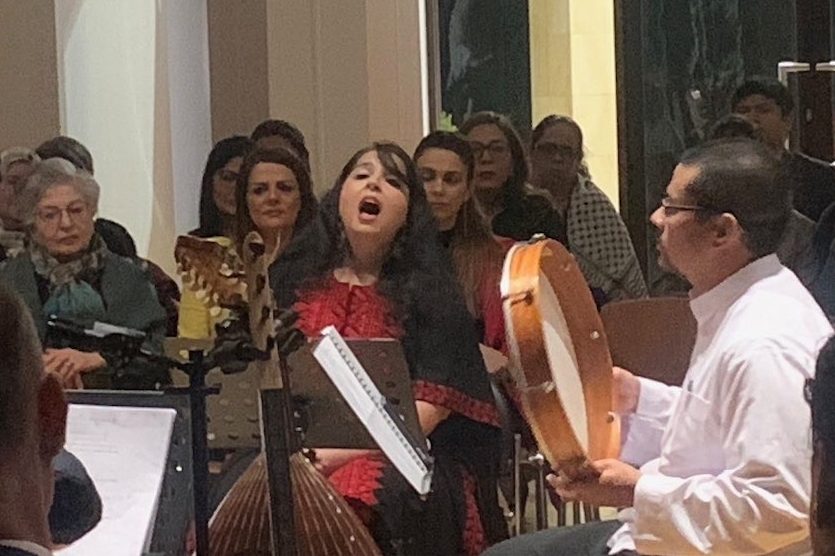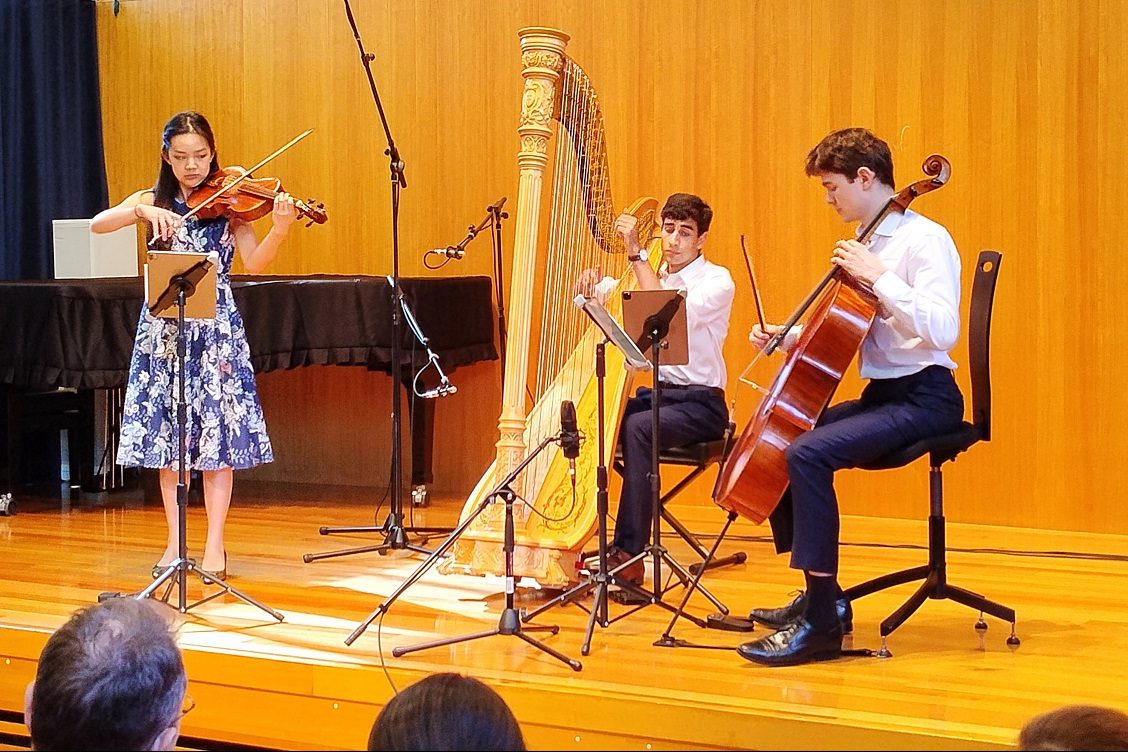
Andrew Ford’s arrangements of Anglo-Celtic children’s songs were to be paired with indigenous Australian music. It would be a difficult task to present something cohesive while, at the same time, navigating the political minefield of cultural appropriation – and, frankly, I don’t think this concert achieved it.
There were undoubtedly some lovely moments in Ford’s song cycle. More Britten than Berio, Ford adopted a conservative, minimal language – something the late century Modernists might have called “wrong note tonality” – but it suited the mood. Highlights included “Aiken Drum”, where Ford used tonal layers and a growing dissonance to great dramatic effect.
“Little Star”, a Ford setting of words by Ann and Jane Taylor, was beautifully sung by Tobias Cole accompanied by elegant harp lines (Meriel Owen).
Coles’s tone, line and sense of legato were, as always, flawless and Ford’s handling of harmony in this song is stunning. But there were awkward moments, too. An over-dramatised, pseudo-Celtic cabaret marred a subsequent song. Ford is a fine craftsman and his subtle handling of tone colour and dynamic is testimony to that. But somehow the songs were a little too conservative, a little too simplistic and, occasionally, a little clichéd.
William Barton presented a virtuosic didgeridoo improvisation. Barton’s breath control, his dramaturgy and command of tone are truly admirable. The connection between the Song cycle and the improvisation, however, was not at all apparent and one wondered why the decision to proceed from one to the other without pause was made.
Featuring the very professional and endearing children’s choirs of Turner Trebles and Vocal Fry, Chris Sainsbury’s “Juljul” (Jumping Ant) was more homage than appropriation – and yet, the spectacle of white musicians presenting indigenous music to a white audience was not altogether comfortable.
Brenda Gifford’s “Galaa” was far more successful. Written mostly in Dhurga language, Gifford skilfully combined folk idiom with traditional indigenous elements. The musical direction of Roland Peelman should be commended – though he was one of a number of musicians to be left off the printed program. “Dreaming Across the Horizon” featured some fine musicians –William Barton and Tobias Cole stood out for me – and some interesting works. But no single piece was strong enough to carry the program.
Who can be trusted?
In a world of spin and confusion, there’s never been a more important time to support independent journalism in Canberra.
If you trust our work online and want to enforce the power of independent voices, I invite you to make a small contribution.
Every dollar of support is invested back into our journalism to help keep citynews.com.au strong and free.
Thank you,
Ian Meikle, editor




Leave a Reply